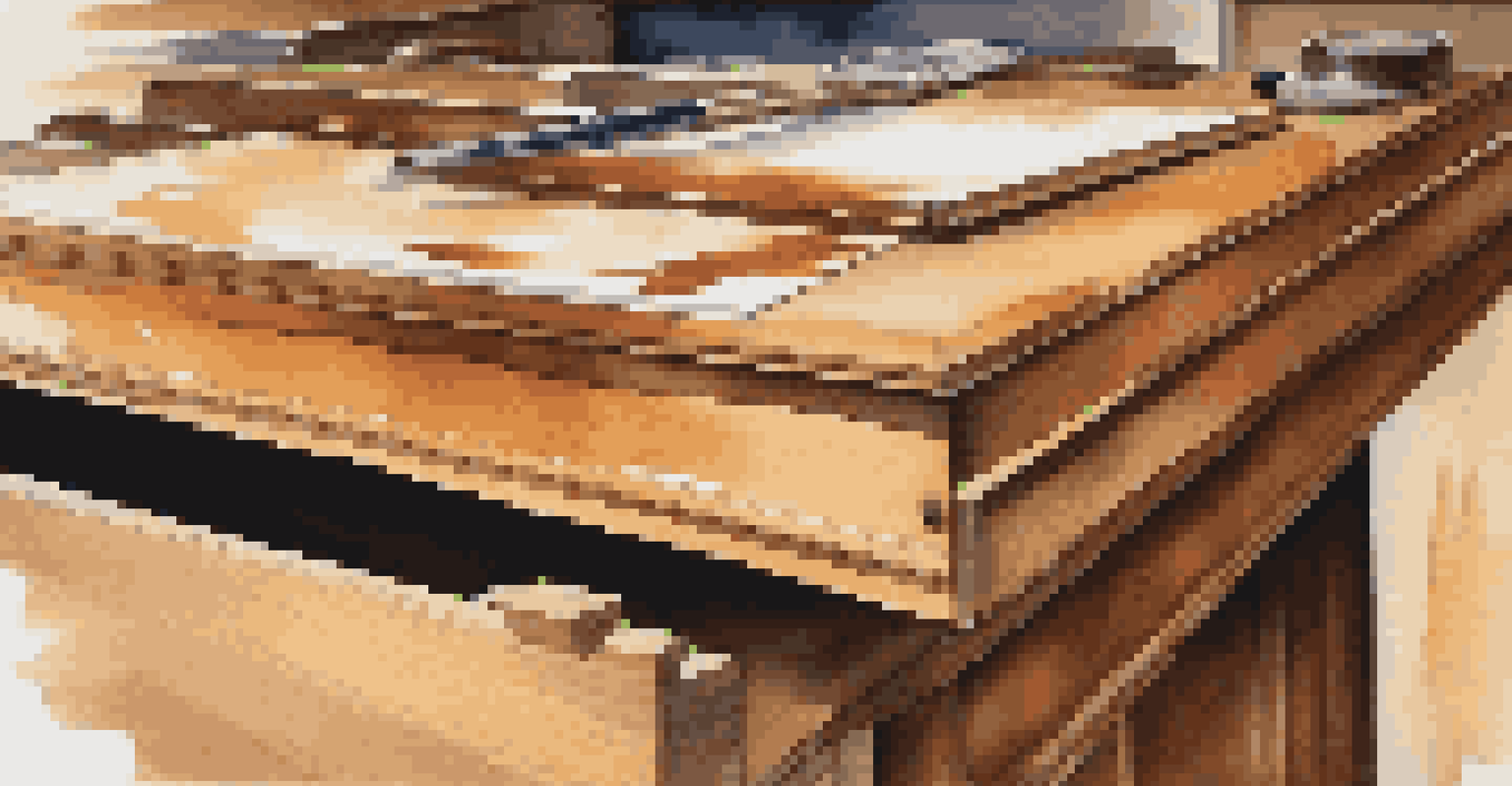Building Custom Cabinets: Tips for a Perfect Fit in Your Home

Understanding Your Space: Measuring for Custom Cabinets
Before diving into building custom cabinets, it’s crucial to measure your space accurately. Take your time to assess the dimensions of the area where the cabinets will be installed. Remember, even a small error in measurement can lead to frustrating gaps or overcrowding.
The details are not the details. They make the design.
Use a tape measure and jot down the height, width, and depth of the space. It’s helpful to measure in multiple areas, especially if the walls aren’t perfectly straight. If you’re feeling adventurous, sketch a rough layout to visualize how everything will fit together.
Lastly, consider any obstructions like windows or electrical outlets. By keeping these factors in mind, you can create a design that seamlessly integrates into your home while maximizing storage space.
Choosing the Right Materials for Your Cabinets
When it comes to building custom cabinets, the materials you choose can make all the difference. Popular options include plywood, MDF, and solid wood, each offering unique benefits. Plywood is strong and resistant to warping, while MDF provides a smooth surface for painting.

Consider your budget and the look you want to achieve. Solid wood, while often pricier, adds a beautiful, timeless appeal. Additionally, think about durability; if your cabinets will see a lot of use, investing in higher-quality materials can save you money in the long run.
Accurate Measurements Are Key
Taking precise measurements ensures your custom cabinets fit perfectly and avoid frustrating gaps or overcrowding.
Don't forget to explore finishes and hardware that match your style. From modern metal handles to rustic wooden knobs, the right details can elevate the overall look of your cabinets.
Designing Custom Cabinets: Style Meets Functionality
Designing your custom cabinets is where creativity meets practicality. Start by choosing a style that complements your home’s overall décor, whether it’s traditional, contemporary, or something in between. Think about how you want the cabinets to function in your daily life, too.
Good design is as little design as possible.
Consider incorporating features like pull-out shelves, lazy Susans, or deep drawers for efficient storage. These elements not only enhance functionality but also make it easier to access your items. Make a list of what you need to store—this will guide your design decisions.
Finally, remember that aesthetics matter as much as functionality. A well-designed cabinet should not only serve its purpose but also be a beautiful addition to your space.
Planning the Layout: Maximizing Storage and Accessibility
A well-planned layout is key to maximizing both storage and accessibility in your custom cabinets. Start by identifying the items you use most frequently and place them at eye level or within easy reach. This simple strategy can save you time and effort in your daily routines.
Think about the flow of your kitchen or workspace. Position cabinets in a way that allows for smooth movement between different areas, especially if you’re working in a kitchen. Avoid clutter by ensuring there’s enough space between cabinets and other elements in the room.
Material Choices Impact Quality
Selecting the right materials for your cabinets affects both durability and aesthetic appeal, influencing the overall look of your space.
Consider adding vertical storage options, such as tall cabinets or shelves, to make the most of your vertical space. This not only creates more storage but also draws the eye upward, making your room feel larger.
Crafting Your Custom Cabinets: Tools and Techniques
Now that you have your design and materials, it’s time to gather the tools needed for crafting your custom cabinets. Essential tools include a table saw, drill, and measuring tape. If you're new to woodworking, don’t hesitate to seek out helpful tutorials or guides to familiarize yourself with the equipment.
Techniques such as dado joints or pocket screws can add strength to your cabinets, ensuring they stand the test of time. Take your time with each step; rushing can lead to mistakes that may compromise the final product. If you're feeling unsure, inviting a more experienced friend to help can make the process smoother and more enjoyable.
Remember, patience is key. The more care you put into crafting your cabinets, the more satisfying the end result will be.
Finishing Touches: Staining, Painting, and Hardware
Once your cabinets are assembled, it’s time to think about the finishing touches that will bring them to life. Whether you opt for a sleek paint or a rich stain, the finish can dramatically change the look and feel of your cabinets. Take the time to test samples to find the perfect shade that complements your space.
Don’t forget about protective coatings! A clear polyurethane layer can safeguard the finish against wear and tear, especially in high-use areas like kitchens. This step might seem small, but it can significantly extend the life of your cabinets.
Layout Enhances Functionality
A well-planned layout allows for easy access to frequently used items, maximizing storage and improving the flow of your space.
Finally, consider your hardware choices. The right handles and knobs can add a personal touch, enhancing the overall aesthetic. Whether you choose modern or vintage styles, let your personality shine through.
Installing Custom Cabinets: Tips for a Smooth Process
Installing your custom cabinets can be a daunting task, but with careful planning, it can be a rewarding experience. Start by ensuring your wall is level, as uneven surfaces can lead to misaligned cabinets. If necessary, use shims to adjust the height and ensure a snug fit.
Take your time during the installation process, and don’t hesitate to refer back to your measurements. It's often easier to install cabinets in sections rather than trying to tackle everything at once. If you're installing upper cabinets, consider using a helper to hold them in place while you secure them.

Finally, double-check that all doors and drawers open smoothly. A little attention to detail during installation can go a long way in ensuring your custom cabinets function beautifully in your home.